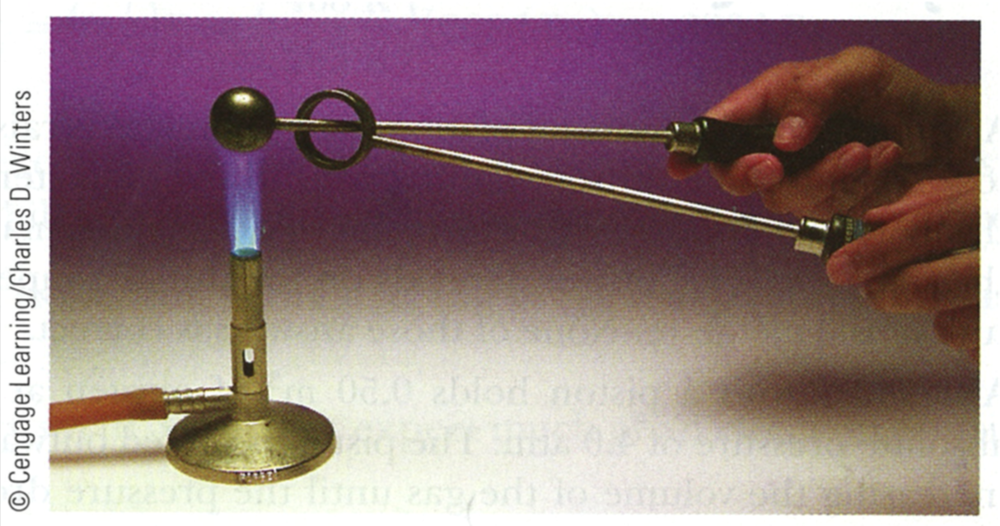<
Physics 123, Lecture 4 Warm-Up
Warm-Up Exercise 4
Due 12:15 pm, Wed 5 Sep 2012
Physics 123, Fall 2012
Reading assignment: 19.1-19.5

When the metal ring and metal sphere in the figure are both at
room temperature, the sphere can be passed through the ring, but only
just barely. (A) After the sphere is warmed in a flame, it cannot be
passed through the ring. Explain. (B) What if the ring is warmed (instead of
the sphere)? Can the sphere pass through? Explain.
(A) The sphere cannot pass through the ring anymore because it has expanded. (B) If the ring is heated, the sphere will still be able to pass through, because the outside and also *inside* radius of the ring both will increase.
Two spheres are the same size and are made of the same
material, but one is solid and the other is hollow. Which expands
more when the temperature is increased? Explain.
They both expand the same. Here's a quote from Sec. 19.4 of the 8th edition of the text: "It may be helpful to think of thermal expansion as an effective magnification or as a photographic enlargement of an object. For example, as a metal washer is heated, all dimensions including the radius of the hole, increase according to equation 19.4. A cavity in a piece of material expands in the same way as if the cavity were filled with the material."
To make a very sensitive glass thermometer, which liquid would be
the best choice? Mercury, alcohol, gasoline, glycerin, water.
What you want is a large coefficient of thermal expansion so that small changes in temperature lead to large fluctuations in the volume of the liquid. So, looking at the table in your book (19.1 in 8th edition), gasoline would be best. Water is a poor choice because its coefficient is not even approximately constant around 0 K.
Return to Course Page
